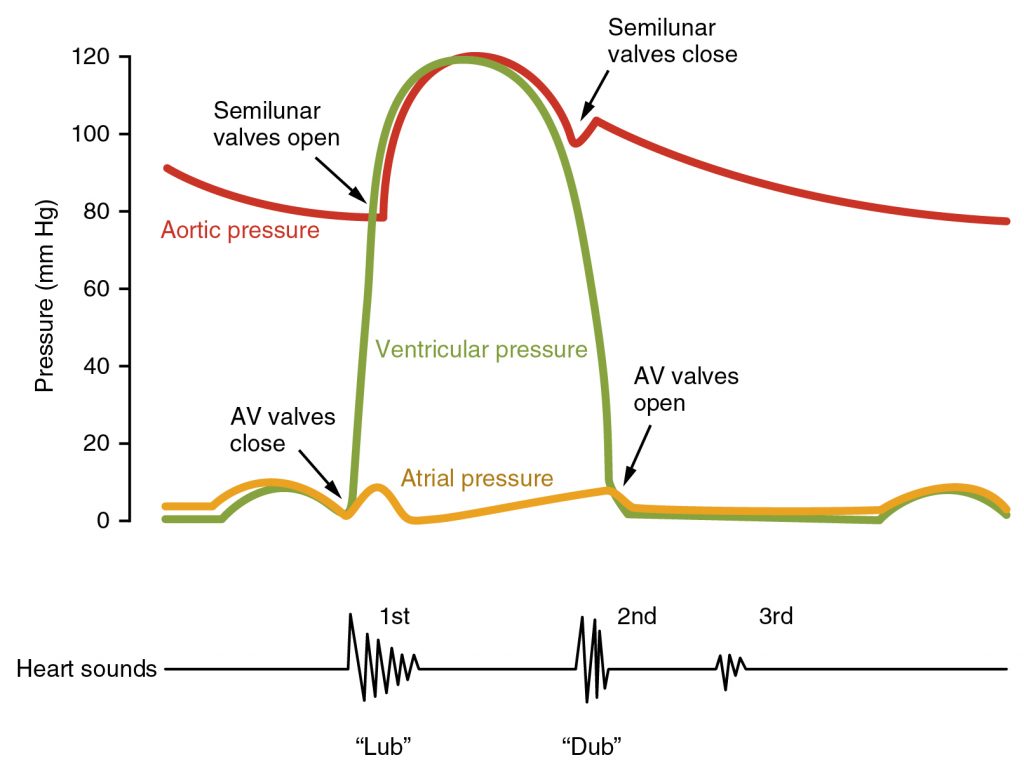Back to Course
Cardiovascular Physiology and Pathophysiology
0% Complete
0/0 Steps
-
Physiology
Structure and Function4 Topics -
Lymphatics and Edema Formation
-
The Microcirculation
-
Vascular Control3 Topics
-
The Cardiac Cycle
-
Determinants of Myocardial Performance7 Topics
-
Neuro-Control of Heart and Vasculature4 Topics
-
Electro-Mechanical Association4 Topics
-
Electrical Side of the Heart4 Topics
-
PathophysiologyDefining Heart Failure
-
Causes of Heart Failure
-
MVO2 and Heart Failure
-
Cardiac Output and Heart Failure7 Topics
-
Compensation for Circulatory Failure
-
Vascular Tone in Heart Failure
Lesson 5 of 15
In Progress
The Cardiac Cycle
The cardiac cycle is composed of systole, diastole, and isovolumic phases (isovolumic contraction and isovolumic relaxation). The simultaneous changes in ventricular, atrial, and aortic pressure occurring during these phases are illustrated in the Wigger’s diagram below.
- Systole: the ventricular ejection phase, between semilunar valve opening and closure
- Isovolumic relaxation: the ventricular relaxation phase when pressure is declining without change in volume, between semilunar valve closure and AV valve opening
- Diastole: the ventricular filling phase, between AV valve opening and closure
- Isovolumic contraction: the onset of ventricular contraction when pressure is rising without change in volume, between AV valve closure and semilunar valve opening
Diastole
The components of diastole include:
- The rapid filling phase: when the pressure in the ventricles falls below that of the atria.
- Diastasis: the middle of diastole when there is minimal flow between the atria and ventricle due to relatively equal pressures.
- Atrial contraction: the final filling of the ventricles occurs because of atrial contraction pushing the last of the preload into the ventricle.

